The Rise of VR in Health & Fitness
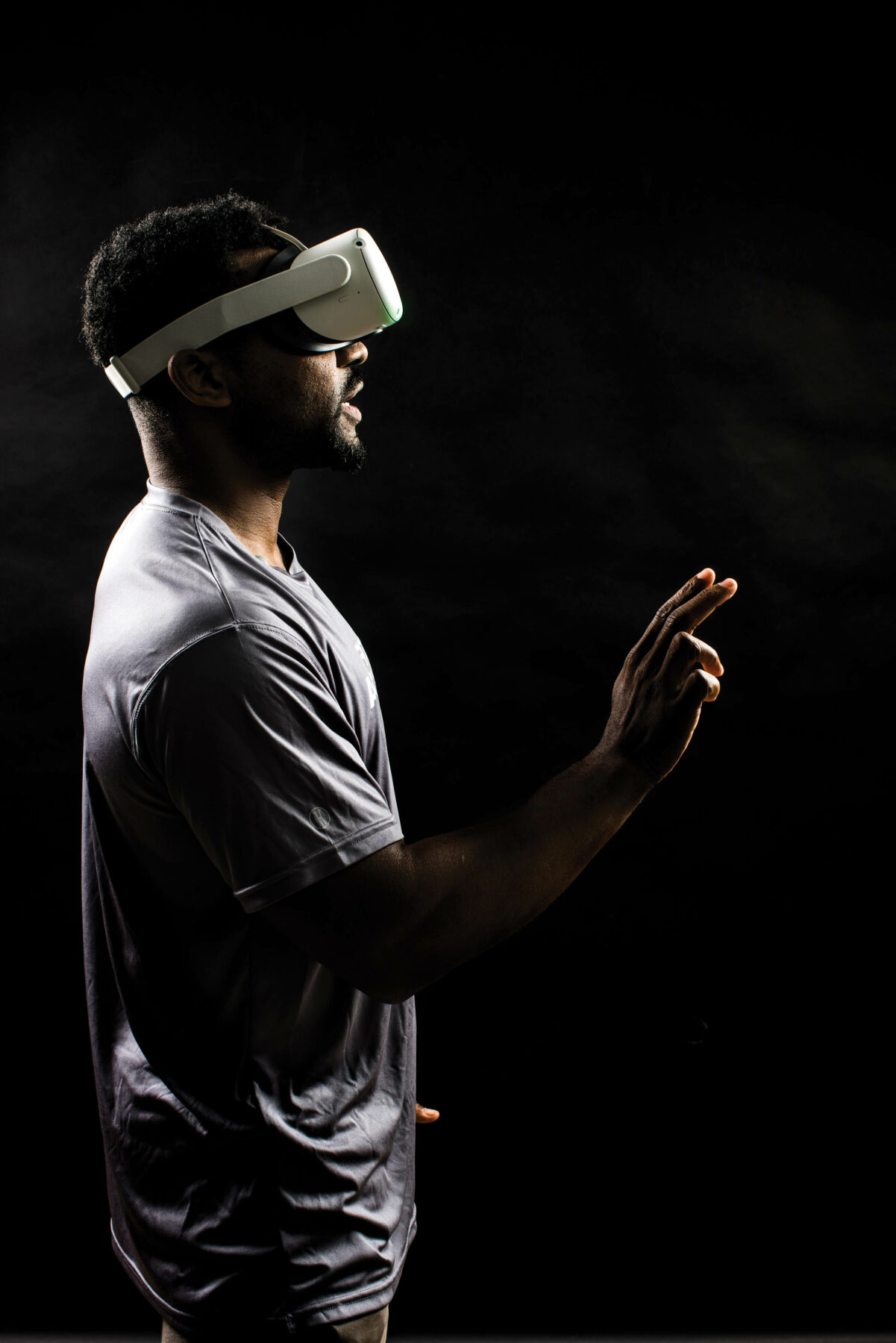
What’s equal to, if not better than, morphine when it comes to pain? Surprisingly, it’s virtual reality.
Over the years, the public use of VR has steadily increased. According to Zippia, approximately 57.4 million people use VR in the U.S., which is about 17% of the nation’s population.
Though VR was originally introduced as a gaming system, when paired with health and fitness, VR has been shown to actually result in positive effects on people’s psychological, physiological and rehabilitative outcomes. This is partly because VR can act as a pain management technique, says Aaron Stanton, the director of the VR Health Institute.
“(Pain management) is the ability to distract yourself from something unpleasant,” Stanton says. “If you can replace it with something engaging, (the unpleasant experience) is easier.”
Consider the morphine tidbit from earlier — one study shows that VR can have the same pain-numbing effect as morphine does on burn victims who are being redressed. In the same way that VR can distract you from a painful injury, it can also be used to distract you from the unpleasant parts of exercising.
In one study, researchers measured participants’ maximum capacity for exercise. After adding VR into the equation, they found that most participants reached their physical maximum yet reported doing only a medium level of exercise. Stanton says one participant even planned to hit the gym later, even though he hit his physical max.
“We literally (ran) him to the point of absolute exhaustion,” Stanton says. “And he was so stuck in this mindset (of) it’s a game; it’s not really serious exercise.”
The History of VR
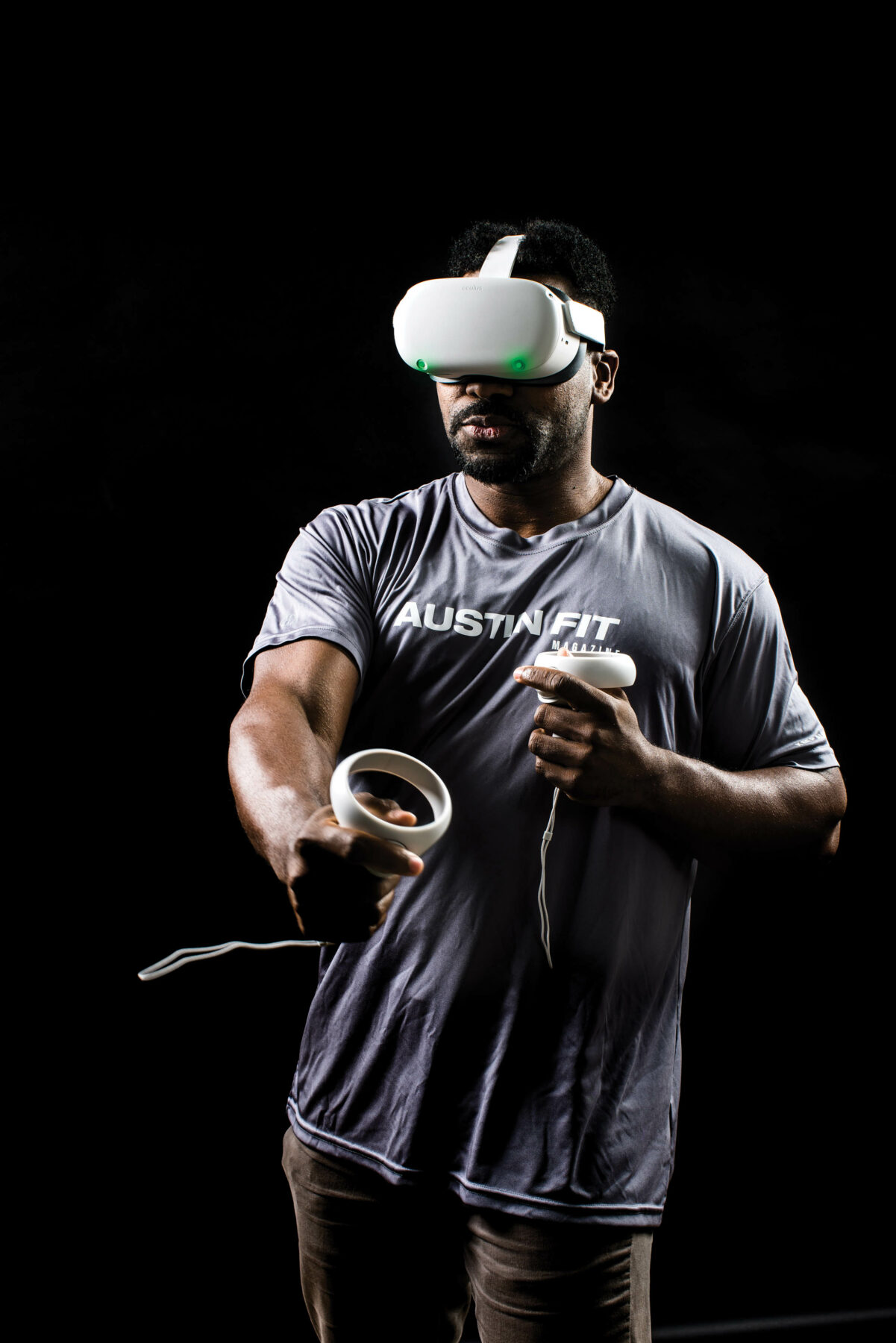
From early on, VR has primarily been used as a means of entertainment. VR technologies date back as early as the 1800s after the creation of the first stereoscope, which displays a 3D image using two photographs and angled mirrors.
Eventually, the first VR machine was created in 1956, which featured a large 4-person booth that stimulated most of the user’s senses — sight, sound, smell and touch — while they viewed a film. Finally, in the 60s, a computer scientist built the first head-mounted display and, in the 80s, VPL Research, Inc. became the first company to sell VR goggles and gloves. From there, VR technology has grown rapidly, especially since Facebook bought the Oculus VR company in 2014. Today, many large tech companies are even developing their own VR technologies.
Because VR was originally introduced as a means for entertainment or gaming — something that “doesn’t mix” with health and fitness — people often have an apathetic response toward combining VR and fitness.
“Somebody could do 100 squats and you (say), ‘That’s a lot of exercise,’” Stanton says. “Then, you put VR on them and the game requires 100 squats in proper form to pass some test and suddenly, people are like, ‘Maybe that’s not exercise anymore.’”
Stanton says he experienced this after playing 100 hours of a VR game called Audioshield. He realized he would be hesitant to share on a first date that he played 100 hours of this game, though it was highly active. However, if he spent 100 hours at the gym or playing basketball or baseball, he would have no problem sharing that.
“We have these tools that are an ally (to) fitness,” Stanton says. “But we are still in this mentality that we should be ashamed of playing games.”
Not Just For the Body, But the Mind
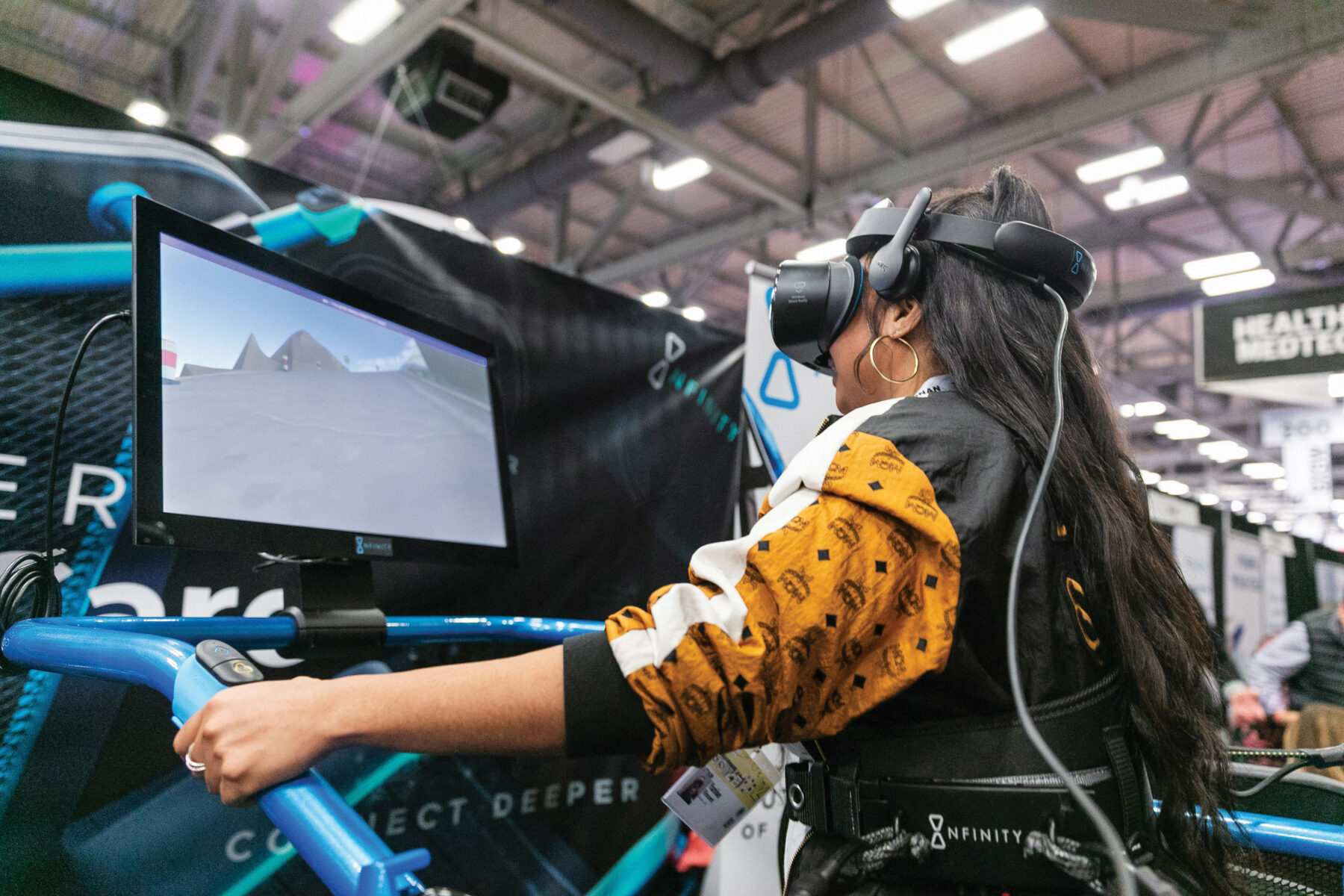
Courtesy of Blue Goji
Aside from physical exercise, VR can also provide a way for users to cognitively exercise. Austin-based VR company Blue Goji uses VR to encourage dual-task exercise through embodied games, which engage both your mind and body — something CEO Coleman Fung says is important to sync up.
“I’m not the conventional guy who (says), ‘Here’s the physical stuff you need to maintain physical health and then this is the cognitive stuff you need,’” Fung says. “They’re all related; you can’t have one without the other.”
Today, among other things, Blue Goji partners with physical therapists, providing VR technology to patients in which they walk on a manually powered treadmill while playing games through VR headsets and controllers. Fung says this helps condition both their physical and cognitive abilities.
“Of course, you’re going to play the game better when sitting on your butt and tapping your keyboard,” Fung says. “But when you are moving, your cognitive abilities also decline.”
Fung hopes the use of VR to bridge the gap between the mind and the body will help patients feel more connected to themselves.
“How do you express when you don’t feel connected to your body?” Fung says. “When you experience episodes of anxiety and depression, that’s the disembodied experience.”
What Happens in VR Doesn’t Have to Stay There
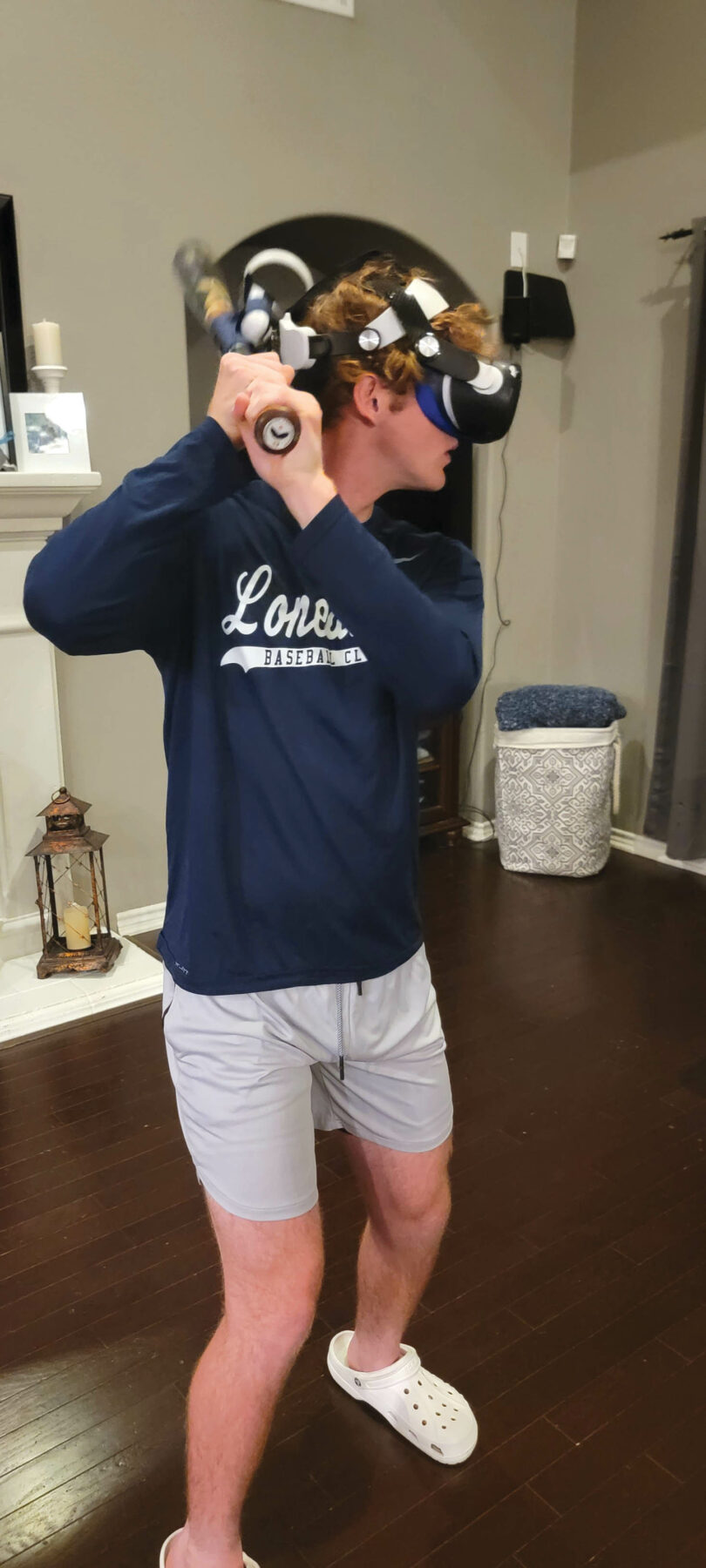
Courtesy of Anthony Perardi
While VR is an increasingly popular technology, Stanton says it will never replace in-person experiences. However, it can be used to enhance real-life scenarios and it provides a unique opportunity for socialization.
“I talked my father into buying a VR headset so we can exercise twice a week when I was in Vietnam and he was in Kansas,” Stanton says. “For a while, we were playing tennis together, and that was how we spent time (together); certainly, that is something you could not do with most traditional exercises.”
VR can also be used to enhance in-person performance, including training for real-world scenarios. WIN Reality, an Austin-based company uses VR for baseball and softball training.
“There’s obviously nothing that replaces doing the physical act of hitting, but (using VR) is pretty dang close,” says Anthony Perardi, a Round Rock-based father who uses WIN Reality in his household.
Since baseball and softball have a lot to do with hand-eye coordination, WIN Reality’s COO Ryan Bennett says players must practice the same pitch thousands of times to improve.
“What we’re trying to do is speed up that learning curve,” Bennett says. “You can go into your virtual environment and get, in a week, the (number) of at-bats you would get in a year, (or) in some cases, in a lifetime.”
Perardi says the life-likeness of VR is especially helpful as a coach because throwing the same curveballs to multiple kids in a row can be challenging. A major benefit of VR for the Perardi household was the ability to get multiple training sessions in a short period of time, even right before a game. Perardi’s 15-year-old son Caiden was able to take VR with him on the road and practice in his hotel room the night before a game.
“Training in real life, to get private lessons with a coach, you have to drive out,” Caiden says. “(With VR), you can just do it at home in 20 to 40 minutes and get your work done.”
Getting to the Root
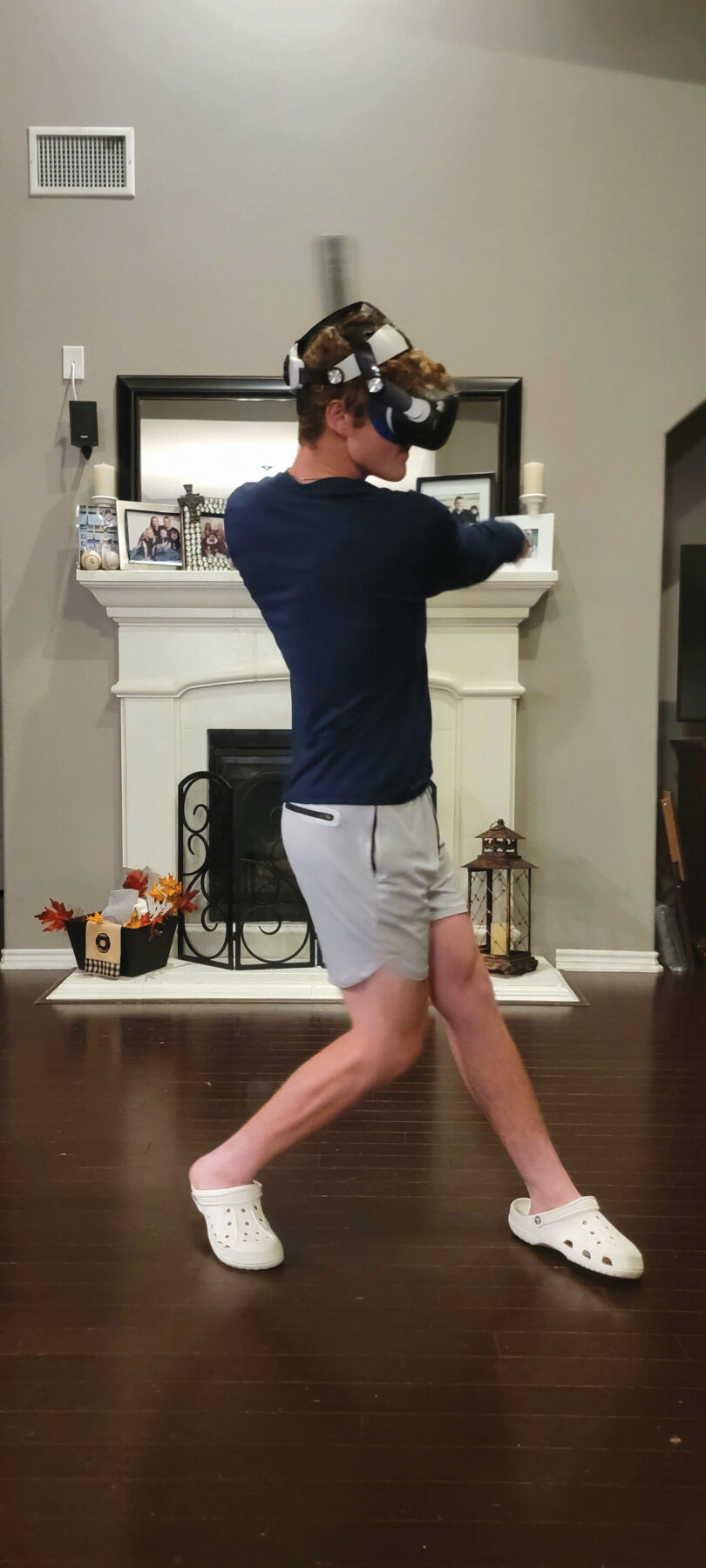
Courtesy of Anthony Perardi
So if VR has a lot of benefits with few drawbacks, other than its evolving price, why aren’t more people using it as exercise equipment, training devices and more? Stanton says one of the biggest challenges that VR faces is that it erases the “no pain, no gain” mentality of needing to “earn” your health.
“If you were able to be healthy by taking a pill just like exercising, there’s a large percentage of the population (who) would be somewhat resentful of all the people who are equally healthy to them without having had to pay for it in the physical commitment sense,” Stanton says.
This points to the bigger question of what makes an activity healthy; is it the existence of pain, or is it the outcome? The answer to this question may be debated among many, but either way, it makes you consider why people don’t get enough exercise in general.
Stanton says if exercise was a product to be marketed, it should be extremely successful — most people believe it’s beneficial for health, most know they don’t get enough of it but wish they got more of it, and if people don’t get enough of it, their lifespan will likely be shorter. And exercise, itself, is free!
Yet, the World Health Organization estimates that over a quarter of the global adult population and more than 80% of the global adolescent population are insufficiently physically active. Why? Sometimes, exercise is frankly unenjoyable and oftentimes, it’s something many must force themselves into. Stanton says something needs to change.
“If we market exercise the way we’ve always been doing it, we will continue to have this tepid response from people,” Stanton says. “We need to figure out how to give all those benefits without the suckiness.”
Looking Forward, With VR
Considering the benefits of VR and if the technology becomes more user-friendly and inexpensive, Stanton says it could easily shift the way we approach health and fitness and solve this dilemma of wanting to exercise but dreading it. One way he expects this to happen is by providing a platform to get people, who already aren’t interested in fitness, excited about exercising. However, this comes at a cost to our current landscape for exercise.
“To be honest, I don’t think the gym of today will exist in 20 years,” Stanton says. “The gamified elements just solve so many things that make exercise crappy… the inevitable part of the whole equation is we’re learning now what makes us successful.”






